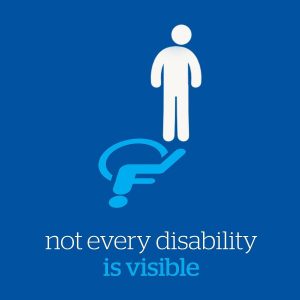In the realm of psychotherapy, being sensitive to invisible disabilities is essential to providing effective and compassionate care. Invisible disabilities—conditions that are not immediately apparent to others—can include mental health disorders, chronic pain, learning disabilities, migraines, GI problems, and cognitive impairment. These disabilities, though not visible, profoundly impact the lives of those who experience them. As psychotherapists, recognizing and accommodating these conditions is crucial for fostering a supportive therapeutic environment.
Creating a safe and welcoming space is fundamental in working with clients with invisible disabilities. This involves both physical and psychological aspects. For instance, ensuring that the therapy space is quiet and free from distractions can help those with sensory sensitivities or concentration difficulties. Active listening and empathy are core skills in this regard. Clients with invisible disabilities may have faced skepticism or invalidation from others, making them hesitant to share their struggles. By genuinely listening and validating their experiences, therapists can help clients feel seen and understood. This validation is a crucial component of the therapeutic relationship, promoting healing and self-acceptance.
Another critical aspect is adapting therapeutic approaches to meet the needs of clients with invisible disabilities. Standard therapeutic techniques may need to be modified to accommodate cognitive or physical limitations. For example, clients with chronic pain may benefit from shorter sessions or breaks during therapy. Those with learning disabilities might require more visual aids or written summaries to process information effectively. Flexibility and creativity in therapeutic methods can significantly enhance the efficacy of treatment for these clients.
Education and advocacy also play a significant role in sensitivity towards invisible disabilities. Therapists should continually educate themselves about various conditions and stay updated on best practices for working with these populations. This knowledge enables therapists to offer informed and relevant interventions. Furthermore, advocating for clients within the broader healthcare system, workplaces, and educational institutions can help remove barriers and promote a more inclusive environment.
Therapists should also be aware of their own biases and preconceptions. Invisible disabilities can be easily overlooked or misunderstood, leading to assumptions that may hinder the therapeutic process. Engaging in regular self-reflection and seeking supervision or consultation can help therapists recognize and address these biases, ensuring they provide unbiased and equitable care.
Ultimately, being sensitive to invisible disabilities in psychotherapy is about seeing the whole person and recognizing the full scope of their experiences. It requires a commitment to empathy, flexibility, education, and advocacy. By prioritizing these principles, therapists can create a therapeutic environment that honors the dignity and worth of every client, fostering growth and healing for those with invisible disabilities. This approach not only benefits clients but also enriches the practice of psychotherapy, making it more inclusive and effective for all.
